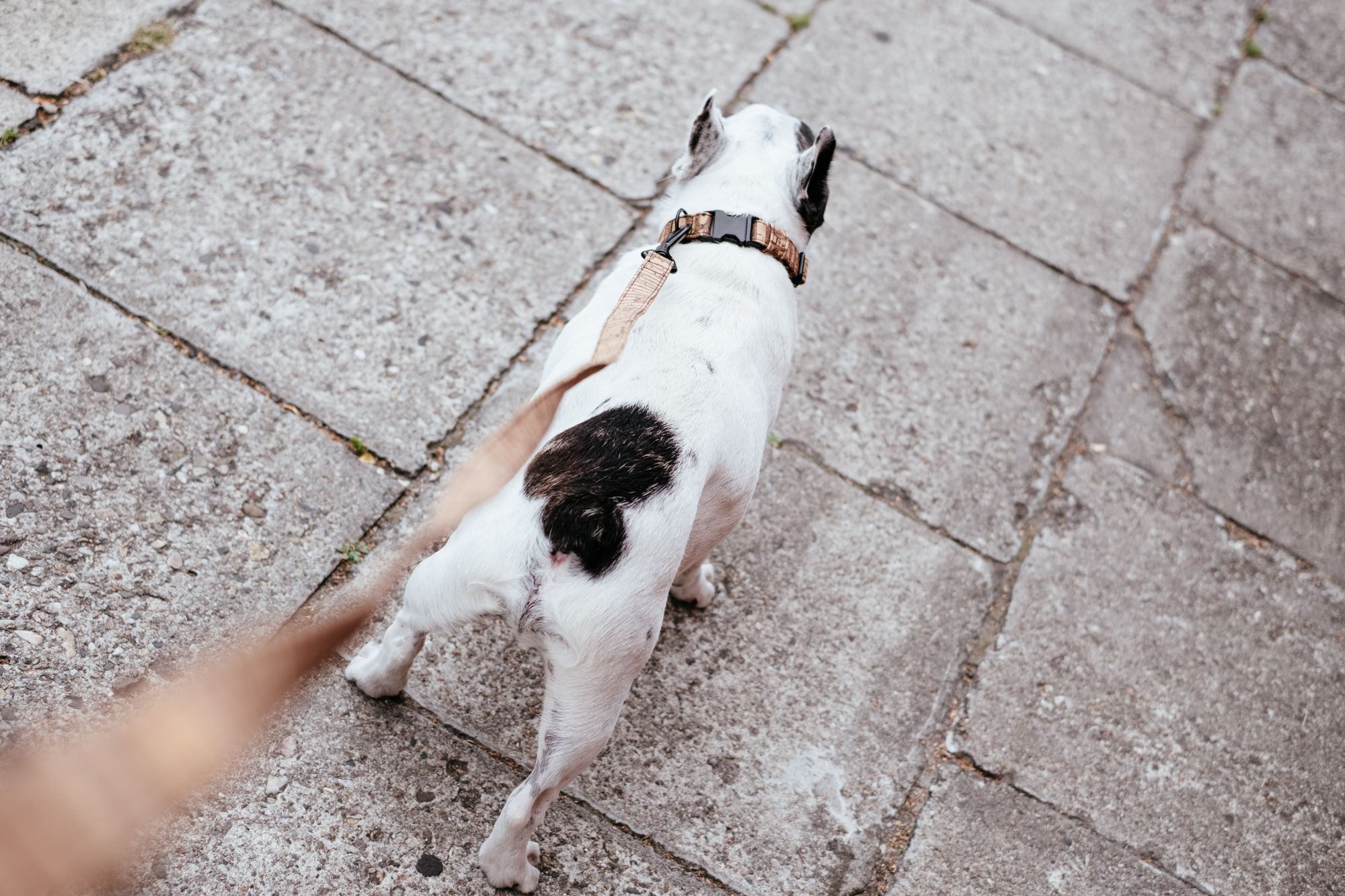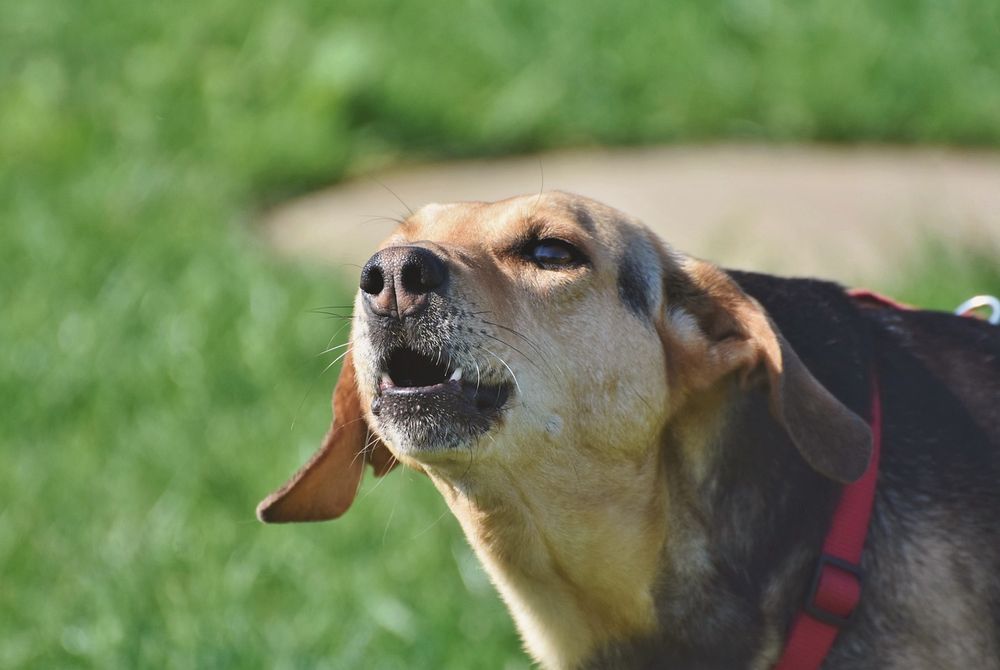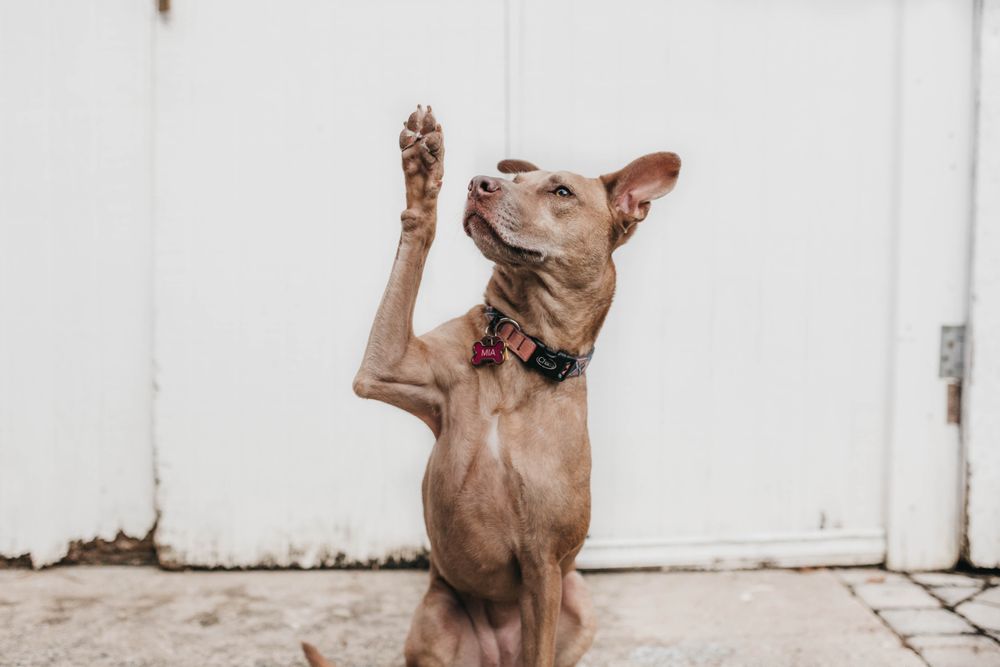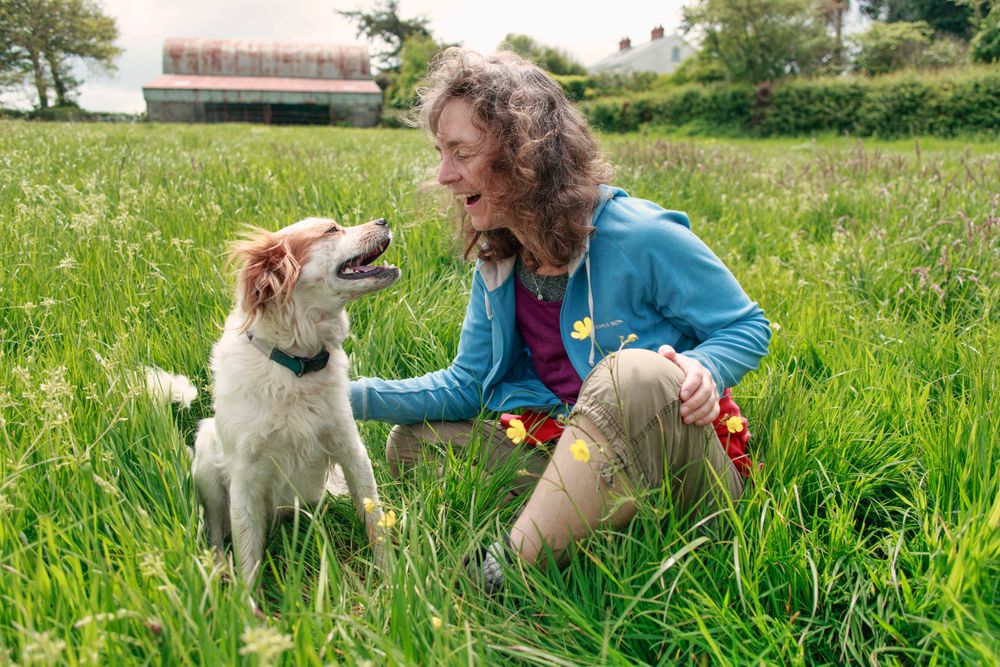Leash reactivity is a common issue that many dog owners face. It occurs when a dog displays aggressive or reactive behavior, such as growling, barking, or lip curling, while on a leash. This behavior is often triggered by other dogs, people, or objects in the environment. To help you manage your dog’s leash reactivity, this article explains:
- The common causes of leash reactivity
- How you can reduce your dog’s leash reactivity
- What other pet parents are asking about leash reactivity
What are the underlying reasons for my dog's leash reactivity?
There are a few reasons your dog might be showing signs of leash reactivity:
- Fear: Dogs that have had negative experiences with other dogs, people, or objects in the past may become fearful and reactive when they encounter similar stimuli while on a leash.
- Anxiety: Dogs with underlying anxiety or nervousness may be more likely to exhibit leash reactivity when confronted with unfamiliar or stressful situations.
- Trauma: Dogs that have experienced trauma or abuse may display aggressive or reactive behavior as a result of their past experiences.
- Lack of socialization: Dogs that were not properly socialized during their critical developmental period (between 3 and 14 weeks of age) may be more prone to fear and aggression towards unfamiliar people, dogs, or objects.
- Overstimulation: Dogs that are easily overstimulated or aroused may become reactive when they encounter exciting or high-energy stimuli while on a leash. Frustration: Dogs that are unable to access other dogs or people due to being on a leash may become frustrated and display leash reactivity as a result.
What are some strategies for managing leash reactivity when out on a walk?
To manage your dog’s leash reactivity, try these techniques when you’re out on a walk:
- Create distance between your dog and the trigger: When you see a potential trigger (such as another dog), try quickly turning (make a “u-turn”) and walking the other way to increase distance between your dog and the trigger. This can help reduce your dog's stress levels and prevent them from reacting.
- Position your body between your dog and the trigger: If the trigger is on one side, position yourself on the other side so that you create a physical barrier between your dog and the trigger. You can use a "touch" cue to help your dog move to the other side of your body.
- Reward your dog with treats: Give your dog a treat whenever they see the trigger and remain calm. You can toss the treat in a direction away from the trigger, or give it to your dog directly. Over time, your dog will learn to associate the trigger with positive rewards.
- Encourage eye contact: Train your dog to make eye contact with you when they see the trigger. Use treats or verbal praise to reinforce this behavior, and gradually increase the level of distraction as your dog becomes more confident and less reactive. Remember to be patient and consistent in your training efforts.

How can I support my dog in becoming less reactive on leash towards their triggers?
If your dog has a very specific trigger (e.g. other dogs, men on skateboards, mail trucks) then the engage/disengage exercise is a great option. For this exercise, choose one trigger to focus on and follow the steps in these two levels of exercises:
Level 1: Engage exercise
- Step 1: Start a safe distance away from the trigger where your dog is not reacting. Stay still and quiet so that your dog notices the trigger on their own.
- Step 2: At the moment your dog engages, use your marker word (e.g. “yes) or clicker to get your dog’s attention. When your dog turns their head, give them a treat or other reward. If your dog doesn’t turn back to you, move further away from the trigger and start the exercise again.
- Step 3: Do 3-5 repetitions at the same distance before moving to level 2. All repetitions should be successful before moving to Level 2. To judge success, use the following criteria: (1) If your dog gets 5/5 correct, push to the next level. (2) If your dog gets 3/5 correct, stick on that level for another round. (3) If your dog gets 2/5 or less correct, drop to the previous level (create more distance between your dog and the trigger).
Level 2: Disengage exercise
- Step 1: Let your dog notice the trigger, but wait 1-5 seconds to see if they will offer to look away from the trigger on their own. If your dog is fixated on the trigger for longer than 5 seconds, go back to Level 1.
- Step 2: At the moment your dog disengages from the trigger, use your marker word or clicker and give them a treat. If your dog reacts or turns back to trigger after, move farther away from the trigger and start Level 2 again.
- Step 3: Do 3-5 repetitions at the same distance before moving closer to the trigger. All repetitions should be successful before moving closer to the trigger. To judge success, use the following criteria: (1) If your dog gets 5/5 correct, move closer to the trigger. (2) If your dog gets 3/5 correct, stick to that distance for another round. (3) If your dog gets 2/5 or less, drop to the previous level (create more distance between your dog and the trigger).
Frequently asked questions about aggression towards other dogs
Can leash reactivity be cured?
Leash reactivity can be managed by using space, rewards and counter-conditioning techniques to change your dog’s feelings about the underlying stressor.
Counter conditioning is the act of re-teaching a dog to have a neutral or positive association with something that was once disliked or feared. To do this, pair the thing your dog dislikes with something they like. For instance, if your dog doesn't like men, feed them treats or give them a toy (something they love) every time they see a man. Over many repetitions, your dog will learn that whenever men are around, good things happen. Eventually, this process will produce a neutral or positive emotional reaction to men.
How long does it typically take to train a dog to be less leash reactive?
Every dog is different, and changes won't happen overnight, but if you stay patient and are consistent with your counter conditioning exercises and walking technique (walk quickly, change direction often, reward often and in the magic zone) you'll see improvements.
Why is my dog suddenly aggressive towards other dogs on walks?
Aggression on walks can arise if your dog feels as though their social distance zone has been violated. Because your dog is attached to a leash, they may think they need to bark, lunge, etc. in order to create distance between themself and the other dog. To help reduce your dog’s stress levels, and reduce their aggressive behavior, create distance between your dog and the other dog.




